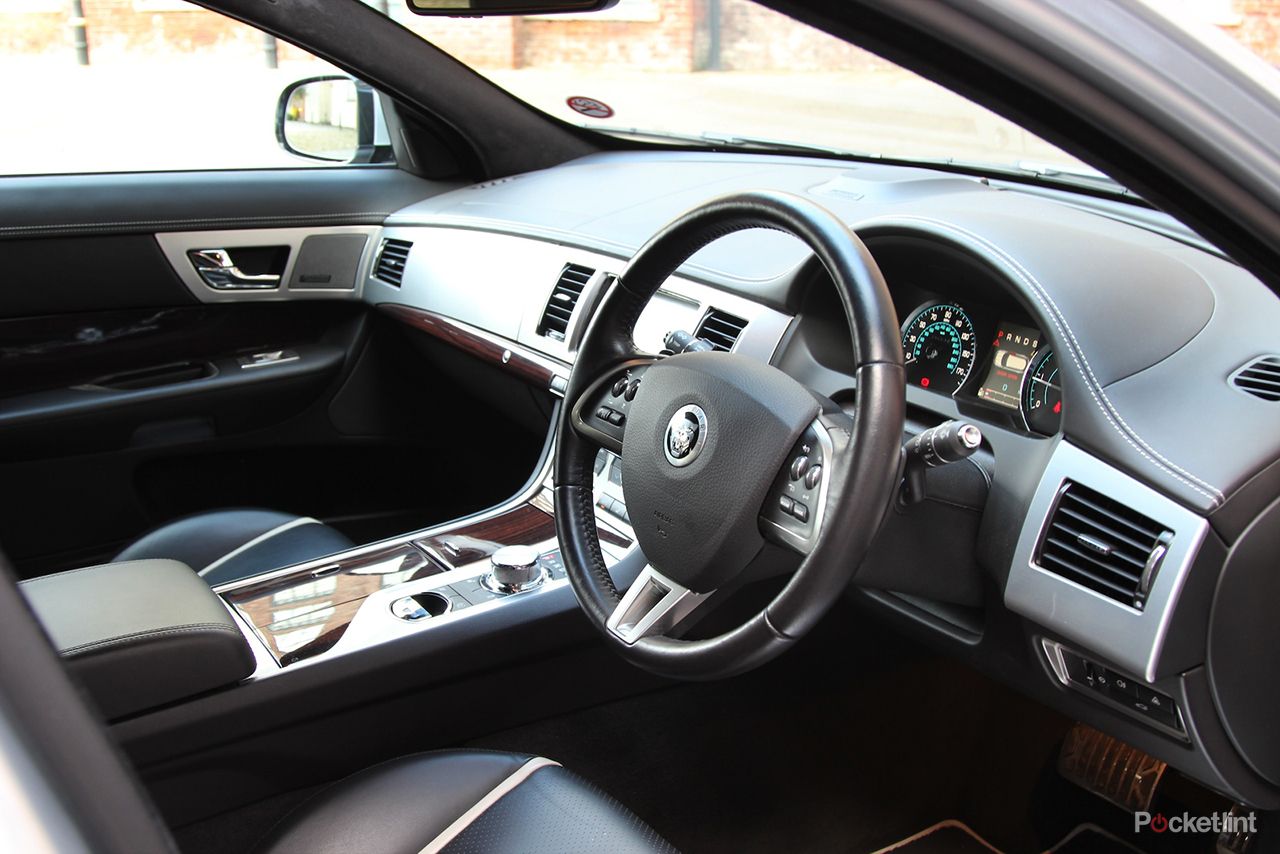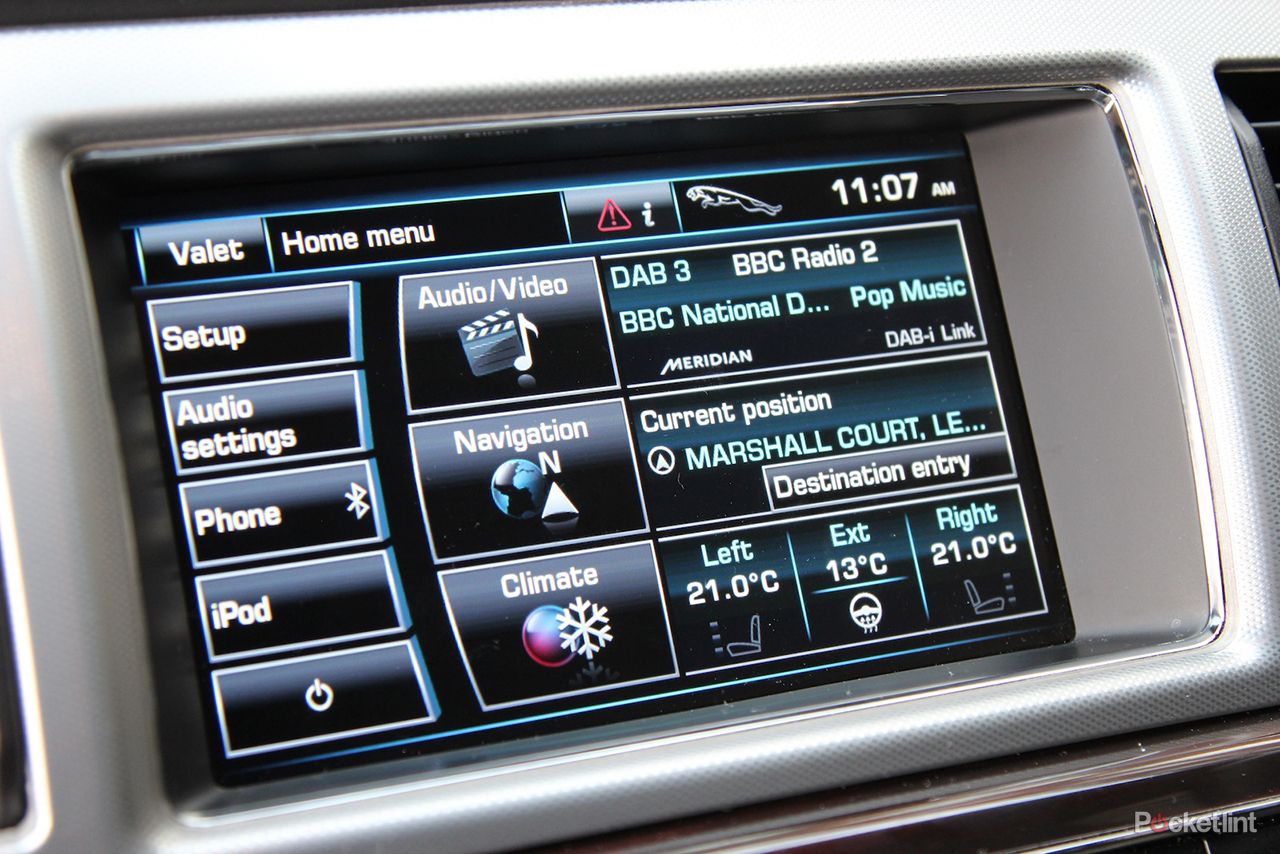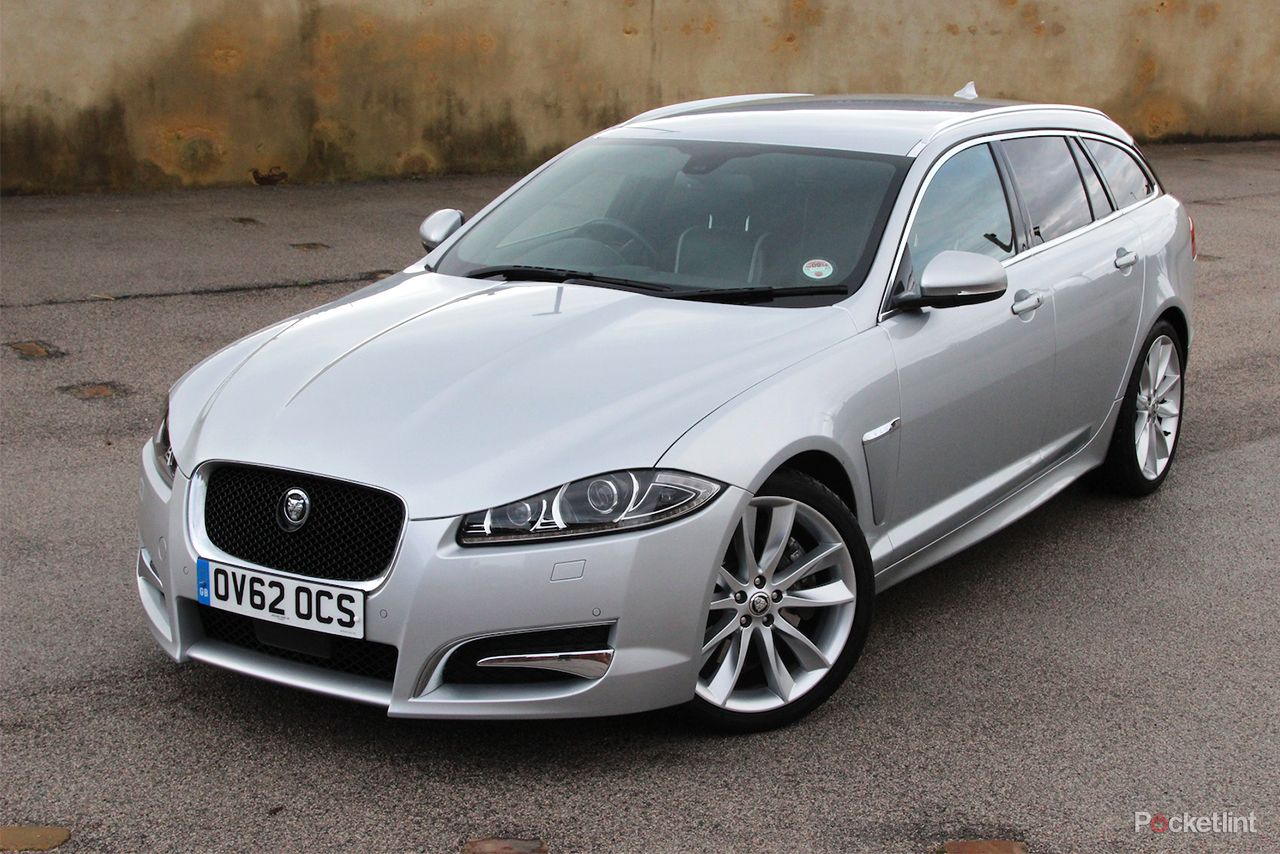Perhaps more than almost any other product, the experience we have of a car is affected by how it is specified - its colour, typology, interior trim, wheels, engine type. This is how it proves with the Jaguar XF Sportbrake - the 3.0 Diesel S Portfolio that we’ve been road testing.
Our quick take
Bar a few interior trim items which will probably come down to person taste and an interface which is showing its age - it’s very hard to find fault with the Jaguar XF Sportbrake Diesel S.
Comfortable, fast, stylish and refined, much of the time it feels like a very different car to the 2.2 Diesel saloon we tested less than two years ago, which is a credit to Jaguar’s engineers constant tweaking and fettling of a formula. But it also goes to show the importance of spec. In many modern cars, "less is more" is truly the order of the day - with many cars at their sweetest in their lowest power and least specced-up form. The opposite is true here. So much so that, having driven the 2.2 diesel and spent brief time in both the lowlier V6 diesel and the hot XF-R, we think this is the pick of the range.
The added practicality of the Sportbrake body style is a handy addition, and far from ruining the lines of the car, we find this vehicle a better resolved piece of design than the saloon. It’s a shame there aren’t a few more family estate features, such as the separately opening window glass found on BMW’s Tourings, but you’ll be the judge of just how important such features are for your needs.
By contrast, in this - granted top spec - Portfolio model, you’ll find many standard features that are still optional at the top of the BMW, Audi and Mercedes ranges. Which means you can even make an argument that this fifty grand car is good value.
Right now, there’s a big XF Sportbrake-shaped hole in our lives and we’ve been left wondering why you don’t see more of them on the road. If you’re in the market for a large, lifestyle estate, make sure you give the Sportbrake a try.
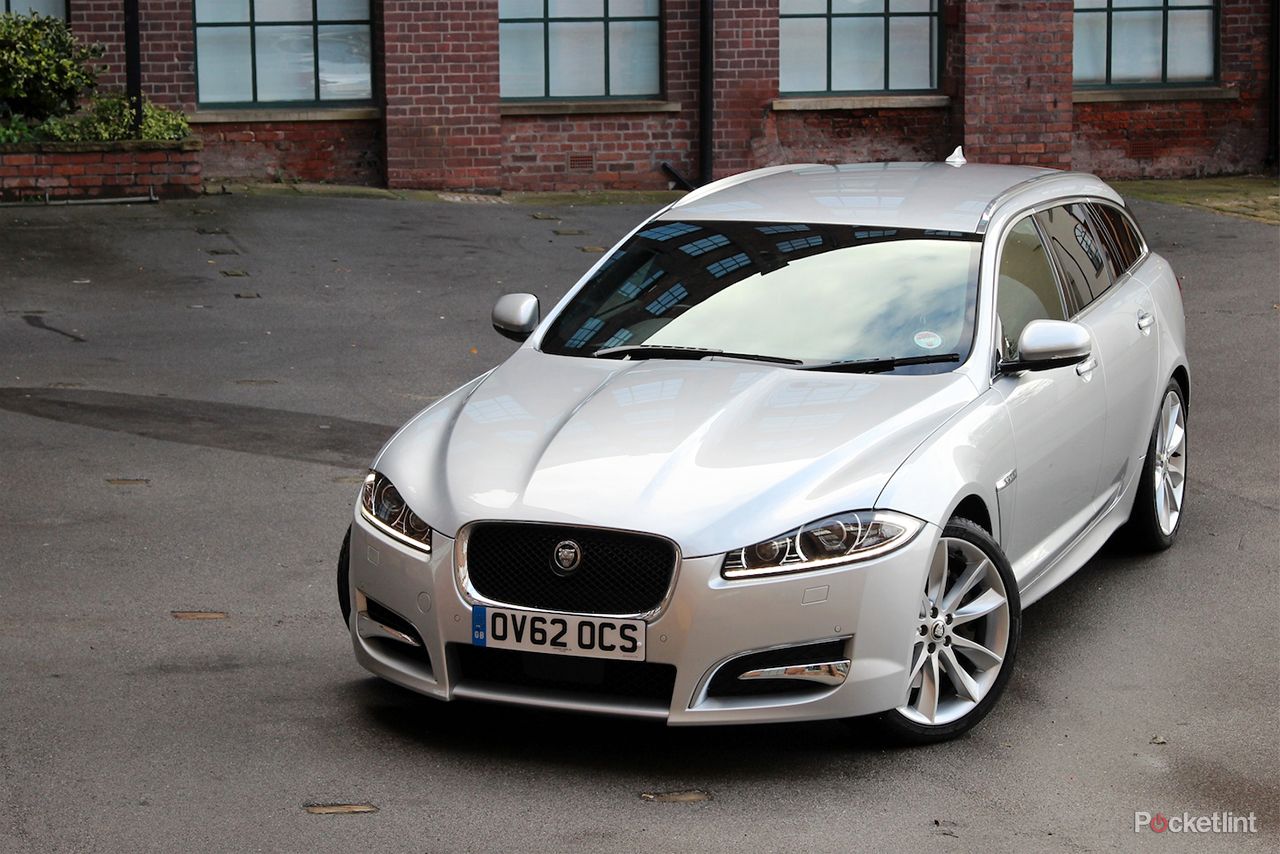
Jaguar XF Sportbrake 3.0 Diesel S Portfolio - 4.5 / 5
| FOR | AGAINST |
|---|---|
|
|
To the outside world this is just "another" XF in the fleet. Which is a decent enough starting point as these things go. But despite having the same set of badges on the front and back, this car feels like an altogether different beast to the 2.2 Diesel saloon we tested back at the tail end of 2011. Allow us to explain…
The joy of specs
It starts with the engine. We remarked in our closing of the 2.2 D saloon review that "were it us, we’d select a lowlier trim level in order to upgrade to Jaguar’s 3.0 diesel V6 engine."
Of course, we can hear you thinking, "that’s obvious, more is always better". Yet in the automotive world, it isn’t always the case. And at this end of the market, things are very much about company car tax implication, which pushes most people towards the 2.2 D.
READ: Jaguar XF 2.2D Premium Luxury review
Yet we call things as we find them. And the reality is that the creamy V6 diesel has a demeanour that suits the XF Sportbrake much better than the smaller unit. Of course it’s faster. But that’s not the primary quality. It sounds better; the engine note is more cultured. Yet it’s also quieter. Its frankly absurd 600 Nm of torque means it’s got much greater flexibility than the smaller car, which means the rather wonderful ZF 8-speed auto - which we’ve sung the praises of in so many products - doesn’t so frantically shuffle itself through the gears as in the 2.2.
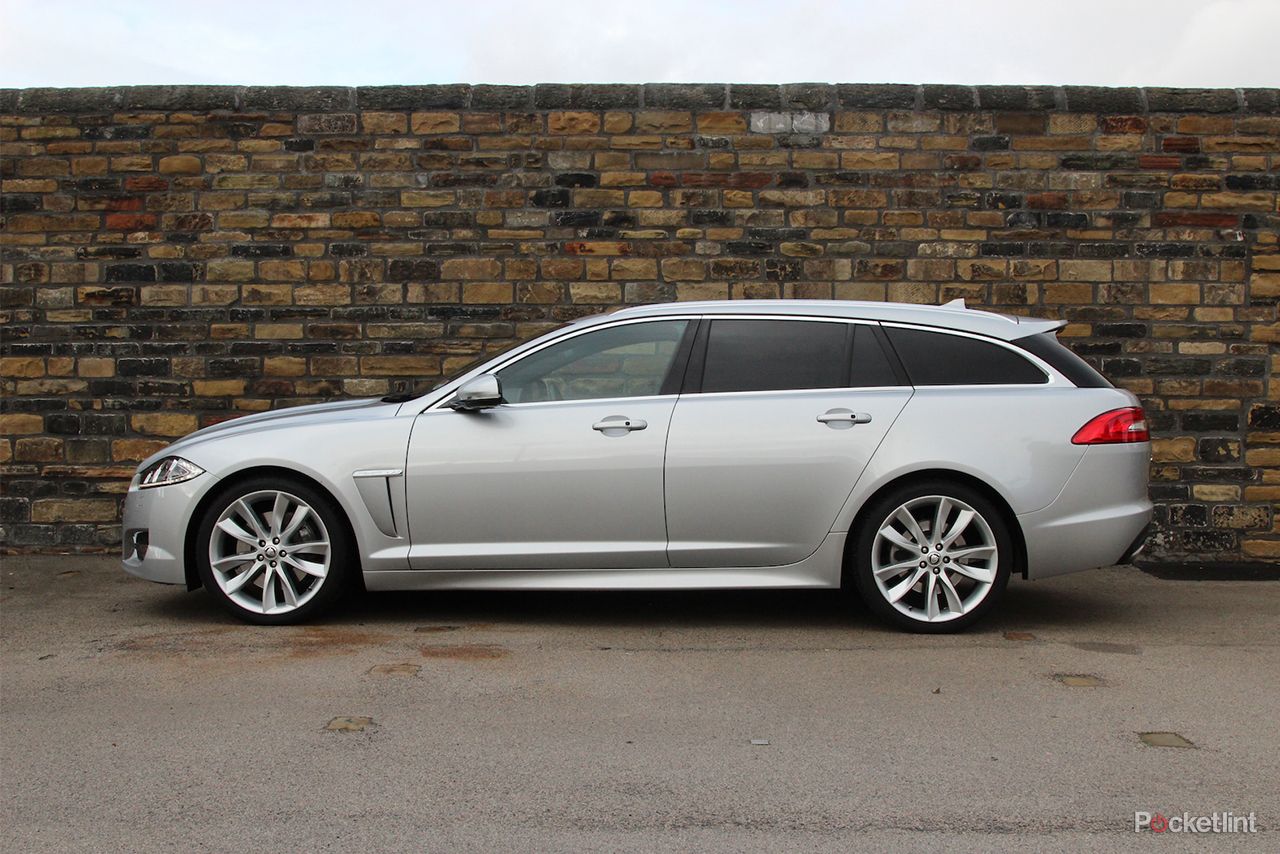
Bury your right foot into the carpet on a slip road, and it’s not so much a being-pushed-back-in-your-seat quality, more one of some other-worldly being sweeping you up and whisking you towards the horizon that’s apparent. It’s all so effortless in the Sportbrake. Only a glance down at the resulting figures on the speedometer is likely to cause you to break sweat. The car remains unflustered.
Don’t call it an estate
The regular XF is a car many think is a pretty thing. As a starting point for a station wagon, it’s not bad. Yet while the saloon is physically large, it feels much tighter - in its cockpit dimensions and boot capacity - than a Mercedes E-Class or BMW 5-Series. And while its roofline has some swoop to it, it’s not obviously a true four door coupe and therefore as special-feeling as a Merc CLS or Audi A7.
READ: Mercedes-Benz CLS 250 CDI BlueEfficiency AMG Sport Shooting Brake review
Yet in this Sportbrake form - and whatever you do, don’t call it an estate in front of Jag - the XF has genuinely appealing qualities and, to our minds, makes more sense than the saloon. Call us ‘wagon fanboys.
While the cabin might still be tight, the airiness of the ‘wagon body style helps how it feels inside. The boot - while lacking the ultimate capacity of, say, a Mercedes E-Class estate - is nonetheless very capacious and, unless you’ve got three teenagers to squash in the back, we doubt you’ll be complaining too much about space.
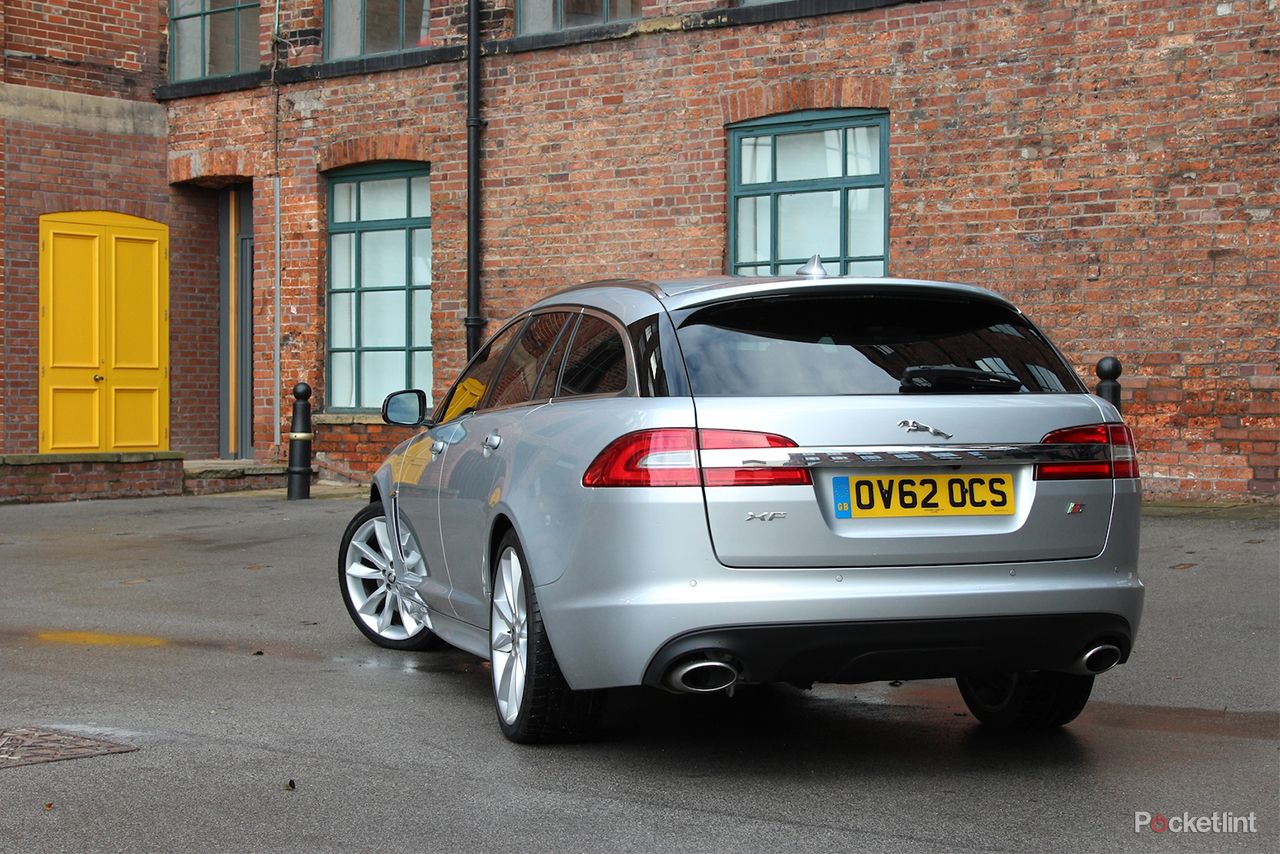
Put it this way, we moved an 8ft tall bookshelf in it, and all that was required was a tug of the lever in the boot to drop the back seats, and a gentle recline of the front passenger seat to get it in. You can see why Britain’s all-conquering Team Sky cycling team use the XF Sportbrake as their support cars.
Perhaps more important than the practicality qualities this Sportbrake format brings, though, are the improvements in the style stakes. The window line drops back in a rackish way, giving it a hint of a sporting, shooting-brake format that treads a nice line between the hearse-on-wheels boxiness of an E-Class wagon, and the try-hard swoops of a CLS shooting brake. Little touches such as the blacked-out D-pillar, which visually continues the rear-most side window into the rear windscreen, really help here too.
Subtle yet smart, like a Jag should be
And if you’ll allow us to finish our meander through the importance of specification, there’s the trim, colour and options fitted to our test XF Sportbrake.
This car suits its much more sober shade of silver than the shouty white did of our earlier saloon model. And riding on the larger, 19-inch rims means that the wheels fill the arches and give this car a stance that's just right.
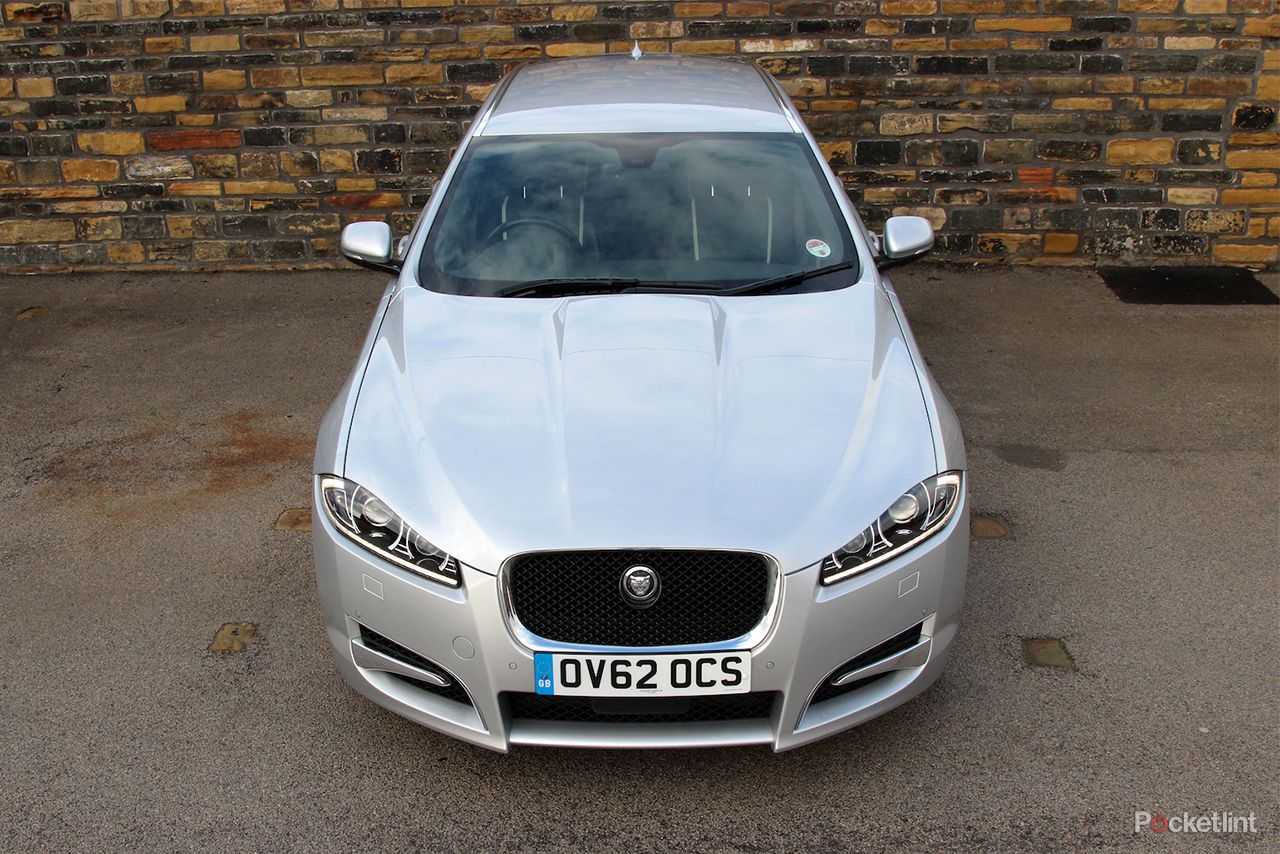
It’s all subtly smart, with a dose of aggression that helps you to clear the fast lane of the motorway without getting all in-your-face aggressive like certain German brands we could mention.
That is just what a Jag should be: subtle, smart, speaking softly yet carrying a big stick? The overall demeanour, character and feeling you get from the XF Sportbrake before you’ve sat in it is, by and large spot on.
Drawing room on wheels?
Swing open the door and the thus far positive impression diminishes somewhat. The XF, in saloon form, has been on the market since 2008 and the interior has remained largely unchanged. In the Sportbrake its age shows, in places.
Let’s be clear, it’s far from a bad place to sit. Everyone who rode in the car commented on it being a nice place to sit. The chairs are comfortable, the leather - and there’s lots of it - is soft and of a supple quality that shames anything you’ll find in a BMW, let alone a Lexus.
But the theatre of the pulsing starter button and rotating-open-on-start air vents loses its novelty after a few journeys. Some might describe the rotating air vents as "naff".
In our test car’s black leather and dark walnut trim, the interior lacks the modern qualities of an Audi too. Although here, again, we’d refer you to the spec sheet, which does contain leather colours beyond black, and wood trims which extend beyond burr walnut.
On the tech front you get Jaguar/Land Rover’s regular 7-inch touchscreen in the Sportbrake - which, if you’ve read our reviews of other Jag and Land Rover products, you’ll know us not to be huge fans of. Why? Primarily because of its slightly laggy operational speed compared to BMW’s iDrive or Audi’s MMi. And partly because its menu structure forces you to do to much eyes-off-the-road screen-based button pressing for comfort, when on the move.
READ: Jaguar F-type first drive
There are redeeming qualities though. The first being that the lack of cabin buttons this has allowed makes for an otherwise clean cabin environment. And once you’ve created a few presets in things like the radio, your button pressing diminishes markedly. Moreover, DAB radio is standard and the satnav accepts full postcodes and this time never got us lost. And we like the fact Jag has kept certain things simple - the cruise control flicks on in one go; there’s not a lot of faffing round with chassis/drive settings either, simply a "drive" and "sport" setting on the gear selector knob which you can easily flick between.
We also like the fact that when you drive it via the gearshift paddles, simply pulling and holding the up-paddle for a few seconds puts the gearbox back into its fully automatic setting. It’s something we’ve been doing in every auto we’ve subsequently driven, and have missed having.
Finally, as seems customary with JLR products these days, we cannot conclude without a word on the sound system. The Meridian unit in the Sportbrake replaces the old Bowers and Wilkins system - one that we rated highly.
Yet the Meridian doesn’t disappoint. It’s an 825W unit with speakers all over the cabin and its different settings allow you to set it up to best suit what music or voice you’re listening to. What delights is the oomph that rock has without falling into distortion and mushiness at high volume. And the detail and depth of soundstage that comes through when listening to jazz. More importantly perhaps, it’s standard on this model.
A high speed express, without the fuel consumption
All of this would be for nought if the XF Sportbrake was a shabby, wobbly thing on the road. But if you’ve driven any recent Jaguar or Land Rover product, that’s hardly something you’d expect.
One benefit the company clearly has over its competitors for being in this country is that it tests on our roads and knows what a state they are in.
The XF Sportbrake, sat on its 19-inch wheels, is not perfect or Citroen-hydropneumatic smooth by any means. But it nonetheless deals well with the worst of our cruddy road surfaces and strikes a fine balance between cosseting passengers but being stiff and taught enough for the person at the wheel to enjoy the drive.
With 275bhp and the aforementioned 600 Nm of torque, this Diesel S has enough to get you into trouble too, and on the week we had it - one where it barely stopped raining sideways - we found ourselves exiting some tight corners slightly sideways if we were over exuberant with the throttle. The stability control always gathered things up though, and it’s worth saying that the extra weight of the Sportbrake goes pretty much unnoticed with this power on tap.
Meanwhile, the steering is light yet communicative and the body control for such a big thing means you can really hustle it down country lanes.
The price for this performance is not huge. Things like standard stop-start and that 8-speed gearbox meant after 400-miles of motorway the trip computer was showing 37mpg. Not bad for something this big, and fast. And handily, if you’ve the extra cash to drop on this Diesel S model, the extra 35bhp you gain over the regular V6 diesel costs you nothing extra in CO2 and nor, therefore, tax. Which is nice.
To recap
Handsome, quick, spacious - the XF Sportbrake in 3.0 Diesel S trim is a good demonstration of how the right spec and format can make a car. Well equipped, with some well-resolved design qualities, it’s also good to drive. Only a cabin and interface that are both showing their age let the side down.

